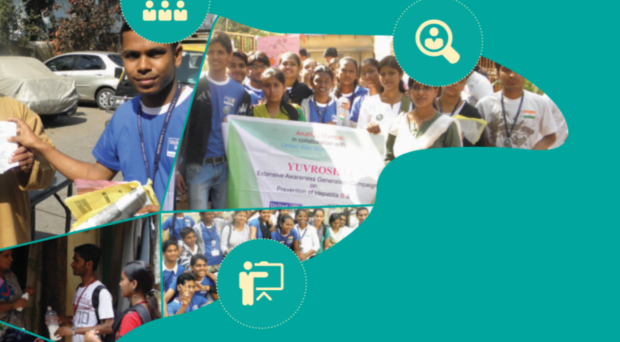
Mumbai is the commercial capital of India. As the country’s most populous city, with over 18 million residents, Mumbai is abuzz with a distinctive entrepreneurial spirit and energy. Impressive gains within the financial and commercial sectors and the many newly minted millionaires and billionaires are invigorating the character of the city and steering it toward global success.
Characterized by entrenched poverty and a lack of hygiene, social services and health infrastructure—the perfect backdrop for the spread of diseases such as viral hepatitis
But all is not aglow. Mumbai also has a dark side, visible in the faces of over 9 million residents of its vast universe of slums, characterized by entrenched poverty and a lack of hygiene, social services and health infrastructure—the perfect backdrop for the spread of diseases such as viral hepatitis. It’s not surprising, given these congested warrens, that Mumbai faces enormous challenges in controlling the increasing prevalence of HBV and HCV infections within these areas.
In light of these circumstances, United Way Mumbai was motivated to take action to help stanch the proliferation of hepatitis B virus (HBV) and hepatitis C virus (HCV) among the slums of Mumbai and its satellite city, Navi Mumbai. In 2011, we launched a two-year project, the Yuvroshni Project for Prevention of Hepatitis B & C Infections through Information-Communication, Community Participation and Targeted Immunization.
We designed a comprehensive, two-pronged strategy: targeted medical interventions to provide quality medical services related to hepatitis, and preventive education for both the general population and high-risk populations within these communities to help control the spread of HBV and HCV.
A community-centered approach
Given the complex setting of our project, we recognized the need for an approach that ensured maximum community participation and outreach with a minimum of resources. Crucial to our strategy was the involvement of a range of community stakeholders, particularly youth, to help carry out the health education component of the campaign in order to ensure a timely, far-reaching and sustained impact.
Both medical intervention and awareness-raising activities were carried out in collaboration with medical providers, community outreach workers, local nongovernmental organizations, community-based organizations, student volunteers and Mumbai’s public health department. Involving community members would empower a range of stakeholders with useful information on HBV and HCV, increase local buy-in and reduce the time between the onset of HBV and HCV infection and its treatment.

United Way Mumbai monitored the initial implementation of the Yuvroshni Project, which was followed by an assessment of the project impact. Findings revealed that, while improvements are needed in a number of areas, including training and communication, both the medical intervention and education components were largely successful in increasing awareness of HBV and HCV in high-risk communities, especially regarding risk behaviors.
As we had anticipated, a particular strength of the project was its participatory structure, which provided the thousands of health outreach workers and student volunteers in the project the opportunity to increase their hepatitis awareness, learn about the challenges in prevention efforts and see the benefits of working as a community to address important community issues.
According to interviews with these groups, the project’s training and incentives inspired commitment and persistence in both groups
According to interviews with these groups, the project’s training and incentives inspired commitment and persistence in both groups, helping them to cultivate productive relationships with target populations in order to help them move toward positive changes in behavior.
With over 10 million new infections and 1.4 million deaths worldwide each year, viral hepatitis remains a global threat. While it knows no boundaries and spares no populations, it thrives most potently where there is a lack of awareness of the disease, deeply rooted poverty and a lack of political will to prioritize effective prevention and treatment activities.
Particularly because lack of political will is so often a key factor in lack of action, we recommend replicating the participatory design of the Yuvroshni Project in other Indian cities and elsewhere in order to ensure the most meaningful advances toward positive change.
More information about the Yuvroshni Project can be found in the project report prepared by United Way Mumbai.
Hepatology, Medicine and Policy is now accepting submissions on this and related issues. For more information, visit: www.hmap.biomedcentral.com.
Comments